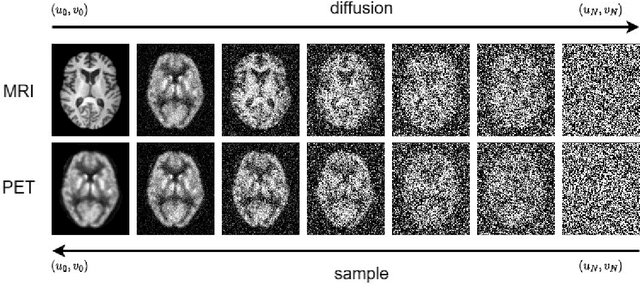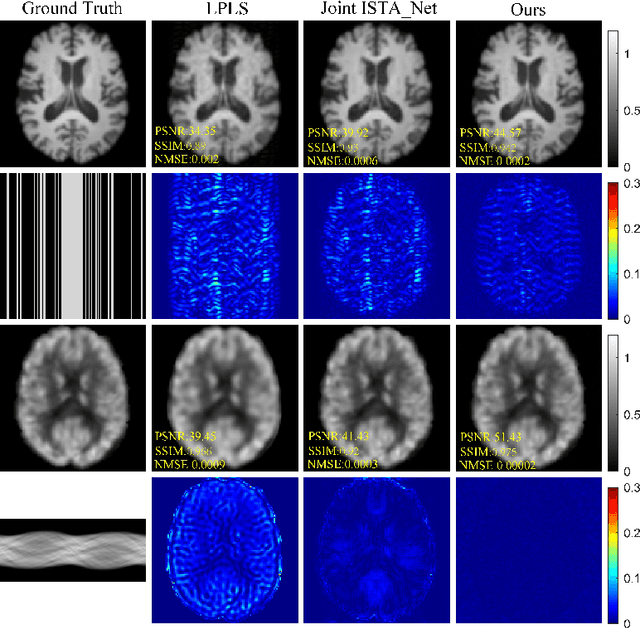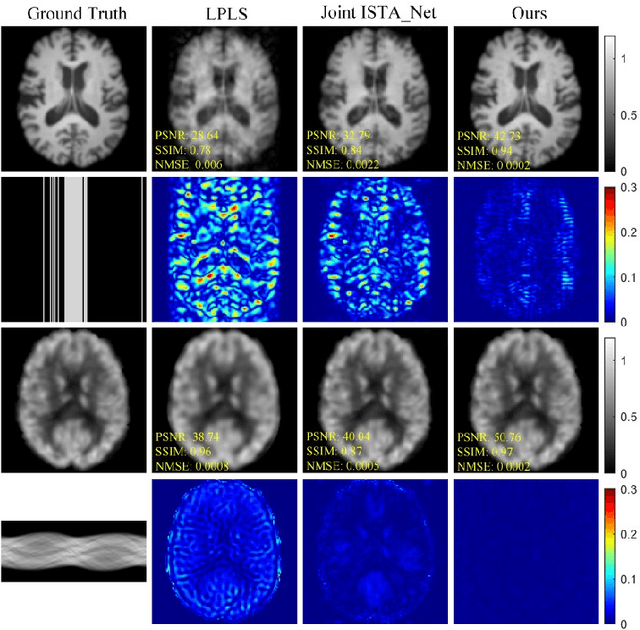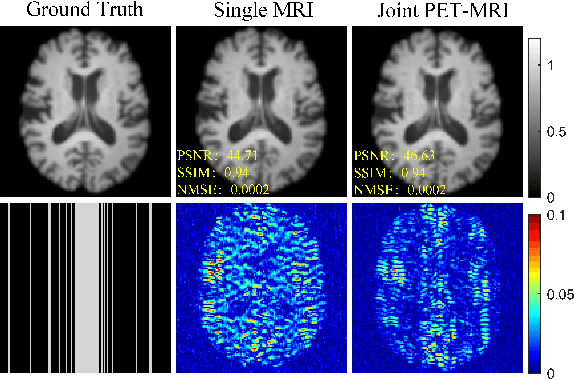Yihang Zhou
Comparative and Interpretative Analysis of CNN and Transformer Models in Predicting Wildfire Spread Using Remote Sensing Data
Mar 18, 2025Abstract:Facing the escalating threat of global wildfires, numerous computer vision techniques using remote sensing data have been applied in this area. However, the selection of deep learning methods for wildfire prediction remains uncertain due to the lack of comparative analysis in a quantitative and explainable manner, crucial for improving prevention measures and refining models. This study aims to thoroughly compare the performance, efficiency, and explainability of four prevalent deep learning architectures: Autoencoder, ResNet, UNet, and Transformer-based Swin-UNet. Employing a real-world dataset that includes nearly a decade of remote sensing data from California, U.S., these models predict the spread of wildfires for the following day. Through detailed quantitative comparison analysis, we discovered that Transformer-based Swin-UNet and UNet generally outperform Autoencoder and ResNet, particularly due to the advanced attention mechanisms in Transformer-based Swin-UNet and the efficient use of skip connections in both UNet and Transformer-based Swin-UNet, which contribute to superior predictive accuracy and model interpretability. Then we applied XAI techniques on all four models, this not only enhances the clarity and trustworthiness of models but also promotes focused improvements in wildfire prediction capabilities. The XAI analysis reveals that UNet and Transformer-based Swin-UNet are able to focus on critical features such as 'Previous Fire Mask', 'Drought', and 'Vegetation' more effectively than the other two models, while also maintaining balanced attention to the remaining features, leading to their superior performance. The insights from our thorough comparative analysis offer substantial implications for future model design and also provide guidance for model selection in different scenarios.
K-space Diffusion Model Based MR Reconstruction Method for Simultaneous Multislice Imaging
Jan 06, 2025Abstract:Simultaneous Multi-Slice(SMS) is a magnetic resonance imaging (MRI) technique which excites several slices concurrently using multiband radiofrequency pulses to reduce scanning time. However, due to its variable data structure and difficulty in acquisition, it is challenging to integrate SMS data as training data into deep learning frameworks.This study proposed a novel k-space diffusion model of SMS reconstruction that does not utilize SMS data for training. Instead, it incorporates Slice GRAPPA during the sampling process to reconstruct SMS data from different acquisition modes.Our results demonstrated that this method outperforms traditional SMS reconstruction methods and can achieve higher acceleration factors without in-plane aliasing.
Image Synthesis with Class-Aware Semantic Diffusion Models for Surgical Scene Segmentation
Oct 31, 2024Abstract:Surgical scene segmentation is essential for enhancing surgical precision, yet it is frequently compromised by the scarcity and imbalance of available data. To address these challenges, semantic image synthesis methods based on generative adversarial networks and diffusion models have been developed. However, these models often yield non-diverse images and fail to capture small, critical tissue classes, limiting their effectiveness. In response, we propose the Class-Aware Semantic Diffusion Model (CASDM), a novel approach which utilizes segmentation maps as conditions for image synthesis to tackle data scarcity and imbalance. Novel class-aware mean squared error and class-aware self-perceptual loss functions have been defined to prioritize critical, less visible classes, thereby enhancing image quality and relevance. Furthermore, to our knowledge, we are the first to generate multi-class segmentation maps using text prompts in a novel fashion to specify their contents. These maps are then used by CASDM to generate surgical scene images, enhancing datasets for training and validating segmentation models. Our evaluation, which assesses both image quality and downstream segmentation performance, demonstrates the strong effectiveness and generalisability of CASDM in producing realistic image-map pairs, significantly advancing surgical scene segmentation across diverse and challenging datasets.
Quantum Neural Network for Accelerated Magnetic Resonance Imaging
Oct 12, 2024



Abstract:Magnetic resonance image reconstruction starting from undersampled k-space data requires the recovery of many potential nonlinear features, which is very difficult for algorithms to recover these features. In recent years, the development of quantum computing has discovered that quantum convolution can improve network accuracy, possibly due to potential quantum advantages. This article proposes a hybrid neural network containing quantum and classical networks for fast magnetic resonance imaging, and conducts experiments on a quantum computer simulation system. The experimental results indicate that the hybrid network has achieved excellent reconstruction results, and also confirm the feasibility of applying hybrid quantum-classical neural networks into the image reconstruction of rapid magnetic resonance imaging.
Optimized Magnetic Resonance Fingerprinting Using Ziv-Zakai Bound
Oct 10, 2024



Abstract:Magnetic Resonance Fingerprinting (MRF) has emerged as a promising quantitative imaging technique within the field of Magnetic Resonance Imaging (MRI), offers comprehensive insights into tissue properties by simultaneously acquiring multiple tissue parameter maps in a single acquisition. Sequence optimization is crucial for improving the accuracy and efficiency of MRF. In this work, a novel framework for MRF sequence optimization is proposed based on the Ziv-Zakai bound (ZZB). Unlike the Cram\'er-Rao bound (CRB), which aims to enhance the quality of a single fingerprint signal with deterministic parameters, ZZB provides insights into evaluating the minimum mismatch probability for pairs of fingerprint signals within the specified parameter range in MRF. Specifically, the explicit ZZB is derived to establish a lower bound for the discrimination error in the fingerprint signal matching process within MRF. This bound illuminates the intrinsic limitations of MRF sequences, thereby fostering a deeper understanding of existing sequence performance. Subsequently, an optimal experiment design problem based on ZZB was formulated to ascertain the optimal scheme of acquisition parameters, maximizing discrimination power of MRF between different tissue types. Preliminary numerical experiments show that the optimized ZZB scheme outperforms both the conventional and CRB schemes in terms of the reconstruction accuracy of multiple parameter maps.
MR Optimized Reconstruction of Simultaneous Multi-Slice Imaging Using Diffusion Model
Aug 21, 2024Abstract:Diffusion model has been successfully applied to MRI reconstruction, including single and multi-coil acquisition of MRI data. Simultaneous multi-slice imaging (SMS), as a method for accelerating MR acquisition, can significantly reduce scanning time, but further optimization of reconstruction results is still possible. In order to optimize the reconstruction of SMS, we proposed a method to use diffusion model based on slice-GRAPPA and SPIRiT method. approach: Specifically, our method characterizes the prior distribution of SMS data by score matching and characterizes the k-space redundant prior between coils and slices based on self-consistency. With the utilization of diffusion model, we achieved better reconstruction results.The application of diffusion model can further reduce the scanning time of MRI without compromising image quality, making it more advantageous for clinical application
* Accepted as ISMRM 2024 Digital Poster 4024
Joint PET-MRI Reconstruction with Diffusion Stochastic Differential Model
Aug 07, 2024



Abstract:PET suffers from a low signal-to-noise ratio. Meanwhile, the k-space data acquisition process in MRI is time-consuming by PET-MRI systems. We aim to accelerate MRI and improve PET image quality. This paper proposed a novel joint reconstruction model by diffusion stochastic differential equations based on learning the joint probability distribution of PET and MRI. Compare the results underscore the qualitative and quantitative improvements our model brings to PET and MRI reconstruction, surpassing the current state-of-the-art methodologies. Joint PET-MRI reconstruction is a challenge in the PET-MRI system. This studies focused on the relationship extends beyond edges. In this study, PET is generated from MRI by learning joint probability distribution as the relationship.
* Accepted as ISMRM 2024 Digital poster 6575. 04-09 May 2024 Singapore
COMAE: COMprehensive Attribute Exploration for Zero-shot Hashing
Feb 26, 2024



Abstract:Zero-shot hashing (ZSH) has shown excellent success owing to its efficiency and generalization in large-scale retrieval scenarios. While considerable success has been achieved, there still exist urgent limitations. Existing works ignore the locality relationships of representations and attributes, which have effective transferability between seeable classes and unseeable classes. Also, the continuous-value attributes are not fully harnessed. In response, we conduct a COMprehensive Attribute Exploration for ZSH, named COMAE, which depicts the relationships from seen classes to unseen ones through three meticulously designed explorations, i.e., point-wise, pair-wise and class-wise consistency constraints. By regressing attributes from the proposed attribute prototype network, COMAE learns the local features that are relevant to the visual attributes. Then COMAE utilizes contrastive learning to comprehensively depict the context of attributes, rather than instance-independent optimization. Finally, the class-wise constraint is designed to cohesively learn the hash code, image representation, and visual attributes more effectively. Experimental results on the popular ZSH datasets demonstrate that COMAE outperforms state-of-the-art hashing techniques, especially in scenarios with a larger number of unseen label classes.
Joint Diffusion: Mutual Consistency-Driven Diffusion Model for PET-MRI Co-Reconstruction
Nov 24, 2023Abstract:Positron Emission Tomography and Magnetic Resonance Imaging (PET-MRI) systems can obtain functional and anatomical scans. PET suffers from a low signal-to-noise ratio. Meanwhile, the k-space data acquisition process in MRI is time-consuming. The study aims to accelerate MRI and enhance PET image quality. Conventional approaches involve the separate reconstruction of each modality within PET-MRI systems. However, there exists complementary information among multi-modal images. The complementary information can contribute to image reconstruction. In this study, we propose a novel PET-MRI joint reconstruction model employing a mutual consistency-driven diffusion mode, namely MC-Diffusion. MC-Diffusion learns the joint probability distribution of PET and MRI for utilizing complementary information. We conducted a series of contrast experiments about LPLS, Joint ISAT-net and MC-Diffusion by the ADNI dataset. The results underscore the qualitative and quantitative improvements achieved by MC-Diffusion, surpassing the state-of-the-art method.
Score-based Diffusion Models With Self-supervised Learning For Accelerated 3D Multi-contrast Cardiac Magnetic Resonance Imaging
Oct 07, 2023Abstract:Long scan time significantly hinders the widespread applications of three-dimensional multi-contrast cardiac magnetic resonance (3D-MC-CMR) imaging. This study aims to accelerate 3D-MC-CMR acquisition by a novel method based on score-based diffusion models with self-supervised learning. Specifically, we first establish a mapping between the undersampled k-space measurements and the MR images, utilizing a self-supervised Bayesian reconstruction network. Secondly, we develop a joint score-based diffusion model on 3D-MC-CMR images to capture their inherent distribution. The 3D-MC-CMR images are finally reconstructed using the conditioned Langenvin Markov chain Monte Carlo sampling. This approach enables accurate reconstruction without fully sampled training data. Its performance was tested on the dataset acquired by a 3D joint myocardial T1 and T1rho mapping sequence. The T1 and T1rho maps were estimated via a dictionary matching method from the reconstructed images. Experimental results show that the proposed method outperforms traditional compressed sensing and existing self-supervised deep learning MRI reconstruction methods. It also achieves high quality T1 and T1rho parametric maps close to the reference maps obtained by traditional mapping sequences, even at a high acceleration rate of 14.
 Add to Chrome
Add to Chrome Add to Firefox
Add to Firefox Add to Edge
Add to Edge